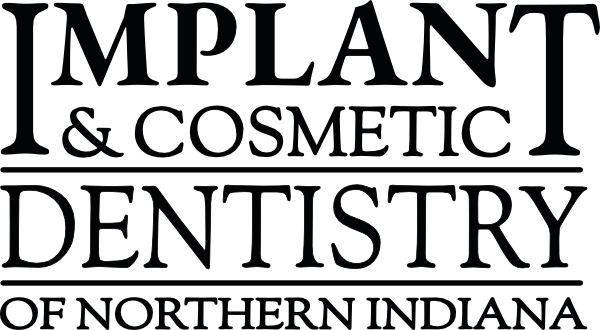Overview of Bone Grafting
Bone grafting is a dental procedure used to replace lost bone in the jaw or to strengthen existing bone. It is a common treatment for patients who need to replace missing teeth or who are considering dental implants. At Implant & Cosmetic Dentistry of Northern Indiana, Dr. Barnard can perform bone grafting to restore the jaw to its original form and function.
Bone grafting can be used to create a strong foundation for dental implants, allowing them to be securely attached to the jawbone. It also helps to restore the natural shape of the jaw, preventing the development of facial deformities. Dr. Barnard can also use bone grafting to treat gum disease, which can cause the jawbone to deteriorate over time. By restoring the jawbone, Dr. Barnard can help to ensure that the patient’s teeth remain strong and healthy.
Benefits of Bone Grafting
Dr. Barnard offers bone grafting services in Rochester for dental implants and other cosmetic procedures. Bone grafting is a process that involves replacing missing bone in the jaw with a bone substitute, allowing for a more secure and stable implant to be placed. The process of bone grafting is beneficial because it helps to maintain the shape of your jawbone, which can help to reduce the risk of facial collapse and other aesthetic issues. Additionally, bone grafting can help to increase the stability of your implant and reduce the chances of it becoming loose or shifting out of place. With the help of Dr. Barnard, you can have a secure implant placed and enjoy the benefits of a beautiful new smile.
Bone grafting also helps to reduce the risk of infection and other complications. By replacing missing bone, Dr. Barnard can help to ensure that the implant is correctly placed and that the surrounding tissue is healthy and strong. This helps to reduce the risk of infection and other problems that can occur when having an implant placed. Additionally, bone grafting helps to reduce the amount of time required for healing and recovery from the procedure, allowing you to enjoy your new smile faster.
Types of Bone Grafting
At Implant & Cosmetic Dentistry of Northern Indiana, we understand that bone grafting is an important part of many oral surgery procedures. Our team of experienced dentists is dedicated to providing the highest quality of care and ensuring that our patients receive the best possible results. We offer a variety of bone grafting techniques to suit the individual needs of each patient.
One of the most common types of bone grafting is autogenous bone grafting. This type of graft involves taking a small amount of bone from one area of the body, such as the chin, and transplanting it into the jawbone. This type of grafting is often used when there is not enough bone in the jaw for the implant to be securely placed. Autogenous bone grafting is also beneficial for those who want to restore the natural shape of the jawbone.
Another type of bone grafting is allografting, which involves using donor bone. Allografts are typically sourced from a tissue bank and are processed and sterilized before being used. Allografts are often used when a patient does not have enough of their own bone to use for the grafting procedure. Allografting can also be used to help restore the shape of the jawbone.
At Implant & Cosmetic Dentistry of Northern Indiana, we are committed to providing the best possible care for our patients. Our team is experienced in performing a variety of bone grafting procedures and will work with you to determine the best course of treatment for your individual needs.
Preparing for Bone Grafting
Dr. Barnard at Implant & Cosmetic Dentistry of Northern Indiana is an experienced and qualified dentist offering bone grafting services. Bone grafting is a procedure used to restore the jawbone when it has been damaged or lost due to periodontal disease or trauma. The procedure involves the placement of donor bone or bone-like material to the area of the jawbone that is damaged. Dr. Barnard will provide detailed instructions on how to prepare for the bone grafting procedure, including dietary restrictions and any necessary medications. The goal of the bone grafting procedure is to promote bone growth and regeneration in order to restore the jawbone to its original shape and size. Patients can rest assured that Dr. Barnard and the team at Implant & Cosmetic Dentistry of Northern Indiana have the expertise and experience to provide successful bone grafting services. With the right preparation and care, patients can look forward to an improved smile and better oral health.
Recovery and Aftercare
Bone grafting is a safe and effective procedure that helps restore the jawbone and other areas of the mouth. After your bone grafting procedure, it is important to take the proper steps to ensure a successful recovery.
Your dentist will provide a detailed list of instructions to follow after your bone grafting procedure. This may include avoiding certain foods and drinks, taking medications to reduce swelling and pain, and avoiding strenuous activities. Following your dentist’s instructions will help ensure a successful recovery.
If you’re in need of other dental related services, contact your Rochester dentist today!
Book Your Appointment Today!
If you are looking for a dental practice that offers bone grafting services, contact Implant & Cosmetic Dentistry of Northern Indiana by calling 574-223-3121 today. Visit our contact us page to learn more about our services and read reviews on Google Maps.






